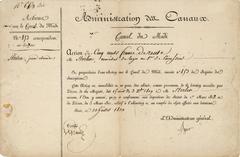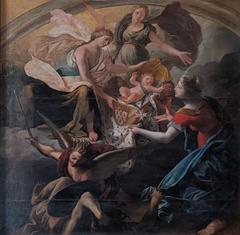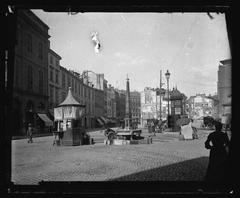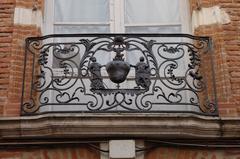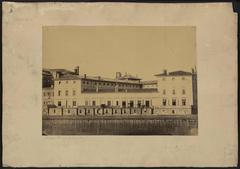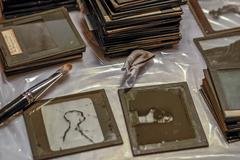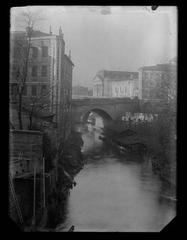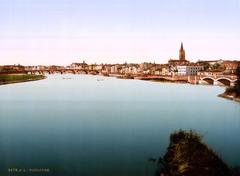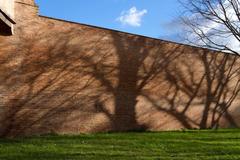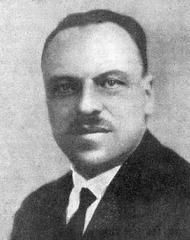Notre-Dame du Taur, Toulouse: Visiting Hours, Tickets, and Historical Sites Guide
Date: 03/07/2025
Introduction
Notre-Dame du Taur is a quintessential symbol of Toulouse’s religious, architectural, and cultural heritage. Situated on the historic Rue du Taur, this remarkable church is renowned for its distinctive pink brick façade, imposing clocher-mur (bell wall), and its deep-rooted connection to the legend of Saint Saturnin (Saint Sernin)—the city’s first bishop and martyr (GPSmyCity; Toulouse Tourism). The church’s very name and location commemorate Saint Saturnin’s martyrdom, a story that remains woven into the fabric of Toulouse’s history.
This comprehensive guide covers everything you need to know for your visit: up-to-date opening hours and ticket information, accessibility tips, architectural and artistic highlights, restoration updates, and recommended nearby attractions. Whether you are a pilgrim, history enthusiast, architecture lover, or a casual tourist, Notre-Dame du Taur offers an immersive experience into Toulouse’s medieval past and vibrant present.
Table of Contents
- Introduction
- Visiting Hours and Tickets
- Getting There and Accessibility
- Historical Background: Origins and Evolution
- Architectural Highlights and Restoration
- Artistic Heritage and Notable Features
- Religious and Civic Significance
- Events, Guided Tours, and Community Life
- Nearby Attractions and Visitor Tips
- Frequently Asked Questions (FAQ)
- Summary and Visitor Recommendations
- References and Further Reading
Visiting Hours and Tickets
Current Status: Notre-Dame du Taur is undergoing extensive restoration and is scheduled to reopen on November 29, 2025, coinciding with the feast of Saint Saturnin (Le Point; Toulouscope).
- Normal visiting hours (post-restoration): 9:00 AM to 6:00 PM, daily. Hours may be subject to change on religious holidays or during special events.
- Entry: Free of charge. Donations are appreciated to support preservation efforts.
- Guided tours: Available after reopening; book via the official Toulouse tourism website or at local visitor centers.
Getting There and Accessibility
Location: Rue du Taur, central Toulouse—between Place du Capitole and the Basilica of Saint-Sernin.
- Public Transport:
- Metro: Capitole station (Line A) and Jeanne d’Arc station (Line B) are both within a 5–10 minute walk.
- Bus: Multiple bus lines serve Place du Capitole and adjacent streets.
- Cycling: Bike racks available along Rue du Taur; VélôToulouse stations nearby.
- Parking: Limited public parking at Capitole and Jeanne d’Arc garages; walking or public transport is recommended.
- Accessibility: Restoration works include improved access for visitors with reduced mobility. The main entrance will feature ramps, and the nave and chapels are designed for wheelchair users (Haute Garonne Tourisme).
Historical Background: Origins and Evolution
Notre-Dame du Taur’s story begins in the 3rd century CE, rooted in the martyrdom of Saint Saturnin. According to tradition, Saturnin was dragged through Toulouse by a bull for refusing to renounce his faith; the church stands where his body was freed (Toulouse Tourism). The site has since been a locus of Christian worship and pilgrimage, especially for those traveling the Camino de Santiago (CaminoWays).
Originally a modest shrine, the present building’s foundations date to the 12th century, with major expansions and Gothic enhancements occurring through the 15th century (Guide Toulouse Pyrénées).
Architectural Highlights and Restoration
Exterior
- Façade: Built from Toulouse’s signature pinkish-red brick, the façade reflects Southern Gothic style, with a fortress-like appearance.
- Bell Wall (Clocher-Mur): A monumental 42-meter-high structure, typical of the Midi-Pyrénées, with multiple arcaded niches and turrets. The bell-wall houses a carillon of 13 bells (France-Voyage).
- Integration: The church’s façade is flush with adjacent buildings, blending into the historic streetscape (France Travel Planner).
Interior
- Nave: A single, elongated nave directs attention toward the altar; the plan balances medieval austerity with later embellishments.
- Frescoes: Medieval and 19th-century frescoes, including Bernard Bénézet’s “Le Martyre et l’Apothéose de saint Saturnin,” adorn the sanctuary (Le Point).
- Baroque Altarpiece: The 18th-century gilded wood retable by Marc Arcis is a centerpiece, illustrating Saint Saturnin’s martyrdom (Petit Futé).
- Stained Glass: 19th- and 20th-century windows illustrate scenes from the lives of the Virgin Mary and Saint Saturnin, recently restored for vibrancy and safety (Le Point).
Restoration (2023–2025)
A €5.69 million project includes:
- Structural repairs (timber roof, upper chapel)
- Cleaning and repointing of brickwork
- Conservation of paintings, frescoes, sculptures
- Restoration of stained glass and installation of fire-resistant glazing
- Accessibility and fire safety upgrades
The grand organ by Eugène Puget is being restored for reinstallation in 2026 (Le Point).
Artistic Heritage and Notable Features
- Frescoes and Paintings: Notably, the golden fresco above the altar depicts Saint Saturnin’s martyrdom. Bernard Bénézet’s works add artistic depth (Guide Toulouse Pyrénées).
- Sculptures: Includes Arthur Legoust’s 17th-century Sainte Anne and Virgin, a rare baroque crucifix, and the Black Virgin statue, Notre-Dame du Rempart (France-Voyage).
- Relics: A stone believed to mark the spot where Saint Saturnin’s body was released is preserved in the church (World City Trail).
Religious and Civic Significance
As the traditional site of Toulouse’s first martyr, Notre-Dame du Taur has long been a spiritual focus for locals and pilgrims. It is an important stop on the Way of Saint James, and its annual Saint Saturnin procession is a major event in the city’s religious calendar (Toulouse.fr; CaminoWays).
Events, Guided Tours, and Community Life
- Services: Regular Masses, weddings, and religious ceremonies; all are welcome to attend.
- Festivals: The Saint Saturnin feast day (November 29) features processions and special liturgies.
- Cultural Events: Sacred music concerts, art exhibitions, and workshops, especially during European Heritage Days (Toulouse Tourism).
- Guided Tours: Bookable via the Toulouse Tourist Office; tours cover art, architecture, and history.
- Interactive Experiences: Notre-Dame du Taur is featured in local walking tours and treasure hunts (World City Trail).
Nearby Attractions and Visitor Tips
- Basilica of Saint-Sernin: A UNESCO World Heritage site; one of the largest Romanesque churches in Europe.
- Place du Capitole: Toulouse’s central square, bustling with shops and cafés.
- Musée des Augustins: Fine arts museum in a former monastery.
Travel Tips:
- For a peaceful visit, come early or late in the day.
- Modest attire is recommended; silence is appreciated during services.
- Photography is allowed (no flash/tripods); check for restrictions.
- No on-site restrooms—facilities available at Place du Capitole.
- The area is generally safe and lively.
Frequently Asked Questions (FAQ)
Q: What are the opening hours post-restoration?
A: 9:00 AM–6:00 PM daily, with possible variations on holidays.
Q: Is entry free?
A: Yes, but donations are welcome.
Q: Will guided tours be available?
A: Yes, after reopening—book via the tourism office.
Q: Is the church accessible for wheelchairs?
A: Yes, with improved accessibility after restoration.
Q: What other sites are nearby?
A: Basilica of Saint-Sernin, Place du Capitole, Musée des Augustins.
Summary and Visitor Recommendations
Notre-Dame du Taur is an outstanding example of Toulouse’s unique blend of devotion, history, and artistry. Its architectural features, from the distinctive bell wall to the vibrant stained glass and Baroque altar, offer a window into centuries of city life (Le Point; Guide Toulouse Pyrénées).
When it reopens on November 29, 2025, visitors can expect an enhanced experience with guided tours, cultural events, and improved facilities. Its central location and accessibility make it an ideal starting point for discovering Toulouse’s historic heart (Toulouscope; Haute Garonne Tourisme).
Pair your visit with nearby attractions for a rich cultural itinerary, and check the official tourism website for updates. Download the Audiala app for audio guides and event notifications, and follow us on social media for the latest news.
References and Further Reading
- GPSmyCity
- Toulouse Tourism
- Le Point
- World City Trail
- Haute Garonne Tourisme
- Guide Toulouse Pyrénées
- France-Voyage
- Toulouse.fr
- CaminoWays

